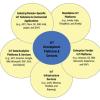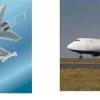Business Transformation Requires Transformational Leaders
Leadership and teaming skills are front and center in times of rapid change. Meet today’s constant disruption head on with expert guidance in leadership, business strategy, transformation, and innovation. Whether the disruption du jour is a digitally-driven upending of traditional business models, the pandemic-driven end to business as usual, or the change-driven challenge of staffing that meets your transformation plans—you’ll be prepared with cutting edge techniques and expert knowledge that enable strategic leadership.
Recently Published
All that has been said and written about the challenges associated with the Internet of Things (IoT) does not quite prepare you for the practical difficulties that crop up as you start implementing and deploying IoT solutions. Most of the publicly available knowledge about IoT challenges relates to high-level issues that are typically addressed through architecture and design decisions. One of our recent successful implementations, an enterprise-wide Remote Energy Management System (REMS), brought us face-to-face with an entirely new set of ground-level challenges, from data ingestion to data storage, to data processing, to data analytics and visualization.
Agile requires real cultural change. Unfortunately, many people new to Agile don’t see the connection between the principles and the practices. In their eyes, Agile is just another process, something that requires following a checklist of behaviors. Other processes in their experience, such as CMMI and ITIL, never asked them to adopt a new worldview. Therefore, even if they become aware of the important connection between Agile principles and practices (which they may not), they may have no past experience in software innovation for making the connection between them.
Fictional Prototyping for Digital Transformation
Digital solutions are intelligently and seamlessly wrapping themselves around the complex lives of consumers in a bid to deliver deeply personalized services as and when required. Consumer expectations of the digital world are heightened by the resulting experiences, which ultimately creates further demands on organizations. If we wish to take advantage of this virtuous cycle, we must gaze into the future and consider the complex systems of interactions that will emerge between more demanding humans and smarter technologies.
This article presents three examples of companies that have successfully pursued a strategy for using technical debt assessment as the basis for better technical and business decisions.
From the school of business, a belief emerged that the needs of business must drive technology, not the other way around. From the school of engineering, there is a belief that technology should shape the business. Naturally, the school of business typically wins. Yet speaking as digital business strategists, this is a gross oversimplification. Every organization has operational needs and line-of-business (LOB) concerns, all of which advance incrementally on decadal cycles.
By asking the CEOs of some of the most successful and influential companies in the world, such as GE and Google, a clear definition of innovation management emerges. The definition addresses the need to quickly and effectively implement organizational goals and objectives to remain competitive and the desire to strengthen advantages through the adoption of innovative ideas, products, processes, and business models.[1]
Standalone IoT Platforms
The current market for Internet of Things (IoT) platforms is quite unsettled, consisting of a broad range of providers offering a large number (and somewhat confusing array) of IoT implementation products. These range from independent providers marketing comprehensive standalone IoT platforms and services to major enterprise software vendors whose IoT platforms are designed to build on, or integrate with, their various ERP, CRM, database, and other enterprise applications. Products in the standalone category include comprehensive IoT platforms in the form of platform as a service (PaaS) offerings designed to provide the infrastructure and facilities necessary for developing, connecting, and managing IoT-connected products and applications.
Agility and Stability
“Agility” is the facility of quick response — the ability to be nimble. In general, to be agile entails the ability to detect changes in your environment as well as the ability to respond quickly and appropriately. Being “agile” (in the traditional sense) is about excelling in a constantly changing environment, much like a serious athlete who masterfully integrates the aspects of balance, speed, strength, coordination, and reaction to the dynamics on the field. Management has two roles in bringing agile behavior to the organization:


















